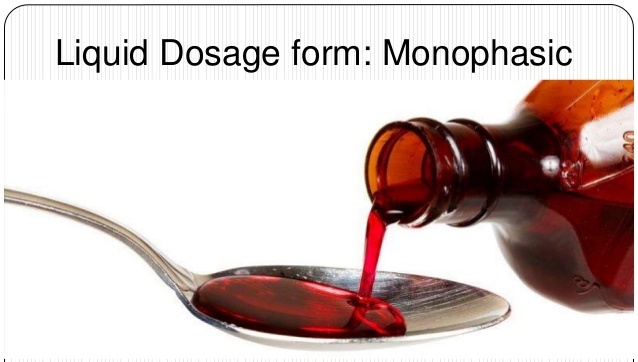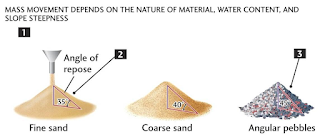General Excipients used in Monophasic liquid preparation
Excipients used in Monophasic Pharmaceutical liquid preparation as below
1. Vehicle:
·
Purified
water
·
Aromatic
water: chloroform, peppermint, cinnamon, dill water
·
Syrups
·
Glycerin
(glycerites)
·
Elixirs
(hydro alcoholic)
2. Solvents used in internal solution:
|
Solvent
|
Properties
|
Remarks/Use
|
|
Aqueous liquids
|
||
|
Water
|
Cheap,
Good solvent action, High dielectric
constant, Miscible,
Non-Inflammable,
Inert
|
Sugar, gum, organic acid, tannins,
glycosides, alkaloid salt are soluble easily,
Cellulose, starch resin, fixed oil,
volatile oils are insoluble
|
|
Purified water (Distilled water)
|
Prepared by distillation or ion
exchange method
|
Used for other than parenteral product
|
|
Water for Injection (WFI)
|
Sterile,
Pyrogen free distilled water
|
For parenteral use
|
|
Sterile water
|
WFI sterilized and suitably packed
|
For parenteral use
|
|
Bacteriostatic WFI
|
WFI sterilized and containing one or
more suitable antimicrobial
|
For parenteral use
|
|
Oily liquids
|
||
|
Corn oil (vegetable)
|
Clear, light yellow
|
Solvent and vehicle for Injection
|
|
Cotton seed oil (vegetable)
|
Pale yellow, Odorous
|
Solvent and vehicle for Injection
|
|
Peanut Oil (vegetable)
|
Colorless to pale yellow
|
Solvent and vehicle for Injection,
uesd in liniment
|
|
Sesame oil (vegetable)
|
Pale yellow, odorless
|
Solvent for Injection, used in
cosmetic, liniment & ointment
|
|
Ethyl oleate (synthetic)
|
Pale yellow, Disagreeable odour and
taste, low viscosity
|
Vehicle for IM injection
|
|
Silicons
|
Low M.W- liquid form,
High M.W.–semi-solid form
|
Used in dermatological preparation.
|
|
Hydroxylated Compounds
|
||
|
Ethanol
|
Miscible with water,
Antimicrobial property
|
Costly due to high excise duty
|
|
Propylene glycol
|
As a solvent, preservatives,
Replace alcohol & glycerin,
Miscible with water,
Solvent for vitamins, steroids,
barbiturates etc
|
For oral preparation,
For hydrophilic ointment,
Used in injection of barbiturates
digitoxin, iodine
|
|
Glycerol
|
Colorless, sweet taste, hygroscopic,
as a solvent
|
Use as solvent, preservatives,
humectant, in throat paints, linctus, syrup, elixirs
|
|
1,3 butylene glycol
|
Colorless, viscous, miscible with
water
|
Used as solvent for morphine injection
|
|
Poly ethylene glycol
|
PEG-300 & 400 are liquid,
colorless
|
Used in lotion, used as solvent in
parenteral preparation.
|
|
Sorbitol
|
White, Hygroscopic, sweet taste
|
70% w/w used as vehicle
|
·
Aqueous
solvents: Water, Purified water, water for injection, sterile water &
bacteriostatic water for injection
·
Oils
and oily materials:
o Animal Source: lard
o Vegetable sources: corn, cotton,
castor oils
o Mineral sources: liquid paraffin
o Synthetics: ethyl oleate, silicons
·
But,
Oils have following problems
o
Rancidity on
keeping & Allergic reaction
·
Hydroxylated
compounds: Ethanol, propylene glycol, glycerol, sorbitol, PEG
·
Modern
vehicle: Glycofurol, dimethylacetamide
3. ORGANOLEPTIC ADDITIVES:
a. Flavours (Flavouring agent):
|
Choice of
flavour according to the taste
|
|
|
Taste
|
Flavours
|
|
Alkaline
|
Mint, Chocolate,
Vanilla
|
|
Sour (Acidic)
|
Lemon, Orange,
Raspberry, Strawberry
|
|
Bitter
|
Mint, Fennel,
Chocolate, Cherry
|
|
Metallic
|
Grape, Lemon,
burgundy
|
|
Salty
|
Citrus, Raspberry,
Fruit, apple
|
|
Sweet
|
Vanilla, Honey
|
|
Choice of
flavour according to colors
|
|
|
Colors
|
Flavours
|
|
Pink to Red
|
Cherry, Raspberry,
Strawberry, Apple, Rose
|
|
Brown
|
Chocolate, Honey,
Caramel, Walnut
|
|
Yellow to Orange
|
Lemon, Lime,
Orange, Cherry
|
|
Green
|
Banana, Mint
|
|
White to off white
|
Vanilla, Banana,
Jasmine, Mint, Spearmint
|
|
Violate to Purple
|
Grape, Liquorice
|
|
Blue
|
Mixed fruit, Pulm,
Blueberry, Liquorice
|
b. Colour (Colouring Agent):
·
A
substance that gives color to pharmaceutical preparations are called coloring
agents.
·
The
function of these ingredients is to enhance the product quality. They provide-
o
Product
identification.
o
Protect
the core from light and moisture.
o
Enhance
the appearance of a preparation, Consistent appearance to formulation
o
The
acceptability of a preparation by the patient.
·
Colours
are often matched to the flavour of a preparation, e.g. a yellow colour
for a banana-flavoured preparation.
Ideal properties of colours:
o
Non-toxic
& No any therapeutic activity.
§ Natural colours are most likely to
meet this criteria, e.g. carotenoids, chlorophylls, saffron, red beetroot extract,
caramel and cochineal.
o
Good
Photo stability of the colour
·
Approved
status of colour/dye from governing body.
Classification of
colours:
·
Natural colours: obtain from plant, mineral and animal source
o Plant Source: chlorophyll-green, carots-yellow,
indigo-blue, saffron-yellow, caramel-Brown (Burnt sugar)
o Mineral Source: Red & yellow ferric oxide,
titanium dioxide, carbon black, lead chromate, Prussian blue
o Animal Source: Cochineal, Carmine
o
Colours
of substance:
§ White: Titanium dioxide,
§ Blue : Brilliant blue ,Indigo
carmine,
§ Red : Amaranth Carmine,
§ Yellow: saffron, Green, carots
§ Brown: caramel
·
Synthetic colours:
o
Mauveine
(perkin’s purple)
o
The
coal-tar dyes
o
Synthetic
dyes are toxic, so their use is regulated by drug and cosmetic Act (D & C
act)
o
According
act certified colour classified as following:
|
Group I
|
FD & C Colour
|
Used in food, drug
and cosmetic
|
|
Group II
|
D & C colour
|
Used in drug and
cosmetic
|
|
Group III
|
Externally D &
C
|
Used in externally
applied drug and cosmetics.
|
|
Example of
permitted synthetic colour
|
||
|
Blue
|
Briliient blue,
Indigo Carmine
|
|
|
Green
|
Gast green, Guinea
green
|
|
|
Violet
|
Wood violet
|
|
|
Red
|
Amaranth (Water
soluble), erythrosine, Scarlet red (oilsoluble)
|
|
|
Yellow
|
Tartrazine, Sunset
yellow
|
|
c. Taste (sweetening agent):
·
For
better palatability of the dosage form
·
Examples:
sucrose, sorbitol, glycerin, honey, saccharin sodium, aspartame.
·
Sucrose:
generally used sweetening agents
·
Sorbitol: it
is half sweet as sucrose.
o Widely used in lozenges due to its
pleasant cooling sensation,
o In large dosage act as laxative.
o Have hygroscopic nature so, used as
humectant in cosmetic and lotion.
·
Glycerin: used
as solvent and preservatives. Act as humectant.
·
Honey:
·
Cyclamate sodium: 30-40 times sweeter than sucrose.
·
Saccharine sodium: 300-550 time sweeter than sucrose.
·
Aspartame:
250-300 time sweeter than sucrose




Comments
Post a Comment